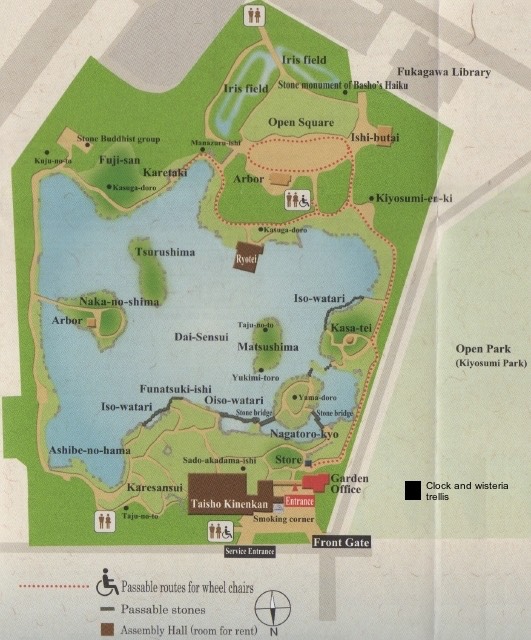It is believed that the site of Kiyosumi gardens was originally the site of the mansion of legendary wealthy merchant in the Edo period. Later it became the property of a feudal lord from 1716 to 1736 and it was during this period that the first garden was created. In 1878 it was part of a large area of land purchased by the founder of Mitsubishi. In 1880 it was opened as "Fukagawa Shinbokuen”, a garden for the reception of distinguished guests and for the recreation of the company’s employees. Construction continued until it was considered the most representative kaiyu-style garden in the Meiji period. It included a large pond drawing water from the Sumida River and manmade hills with valuable stones collected from all over the country.
清澄庭園 = Kiyosumi
During the Great Kanto Earthquake in 1923 the gardens were used for refuge and afterwards the eastern half, which had suffered less damage, was donated to the City of Tokyo and was opened as a park after some restoration work in 1932. It was renamed Kiyosumi Gardens. It was again used for refuge during the bombing of Tokyo in 1945.

The site to the west was opened as an open park in 1977.
Total area 20 acres
4,224 tall trees
13,414 small trees and 2.2 acres of shrubbery
In 1979 Kiyosumi Gardens was designated as a Place of Scenic Beauty by the Tokyo Metropolitan Government.
The plan of the garden is taken from the brochure (inside & outside).